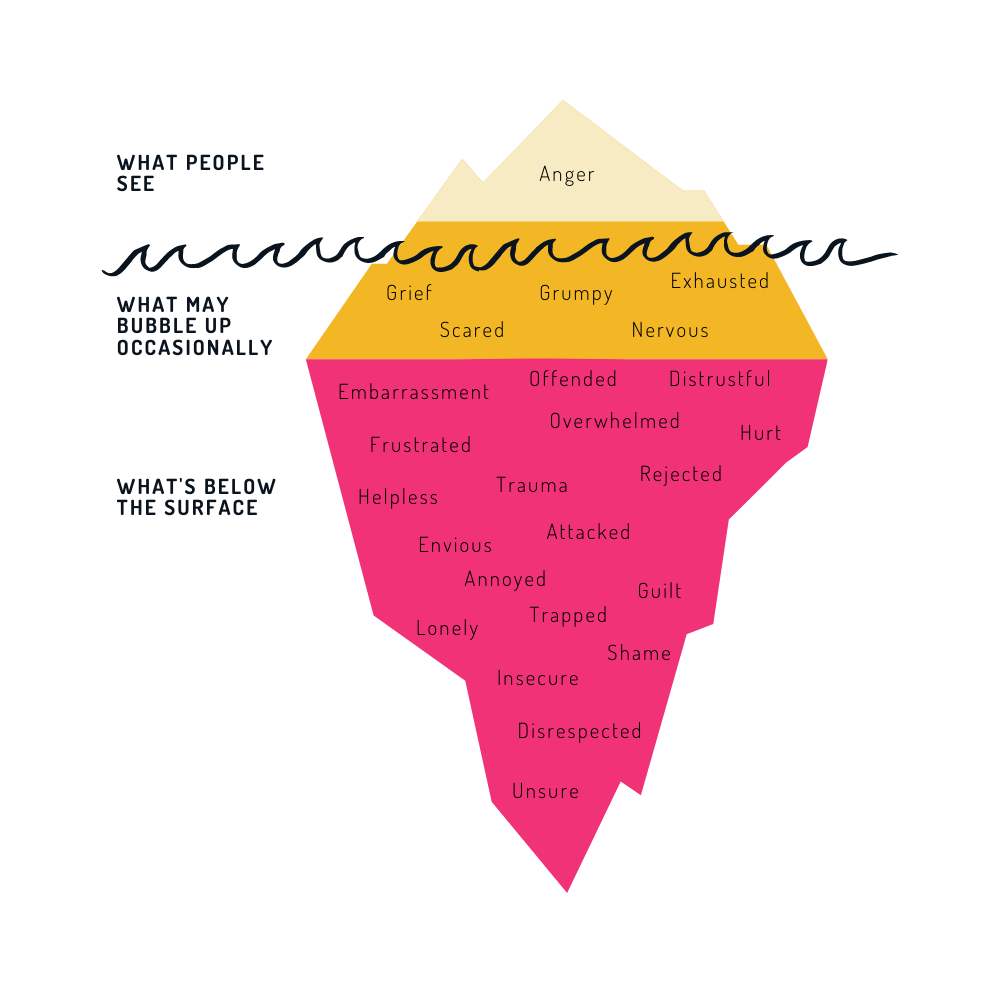RPC activity 07
The behavioural iceberg
This activity will help you to consider what is happening ‘below the surface’ which influences how you behave.
The tool is built on the iceberg theory. We know that an iceberg has only 10% of its total mass above the water while 90% is underwater. But that 90% is what the ocean currents act on, and what creates the iceberg’s behaviour at its tip. Personal and relationship behaviours can be seen in the same way.
How to use this tool
1. Use the iceberg to reflect what is happening inside of you that other people may not see, experience or know.
2. Share your responses with your partner – and ask them to share their responses with you.
3. Look at the areas where you agree and the areas where you disagree.
4. Use this knowledge to consider what actions you need to take – both individually and jointly.
An example:
The Anger Iceberg
Often when we are angry, there are other emotions hidden under the surface.
This is what we call the Anger Iceberg, because it shows other emotions and feelings that may be hidden below the surface.
Sometimes it’s embarrassment, loneliness, depression, or fear. Other times, it’s a combination of several feelings.

Emotions and feelings in the example
What people see
- Anger
What may bubble up occasionally
- Exhausted
- Grief
- Grumpy
- Nervous
- Scared
What’s below the surface
- Annoyed
- Attacked
- Disrespected
- Distrustful
- Embarrassment
- Envious
- Guilt
- Helpless
- Hurt
- Insecure
- Lonely
- Offended
- Overwhelmed
- Rejected
- Shame
- Trapped
- Trauma
- Unsure
Download the activity
We have made this activity available to download as a PDF.
[PDF, 4 pages]
